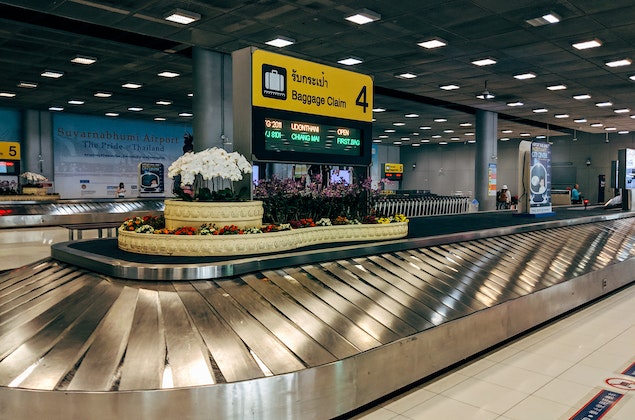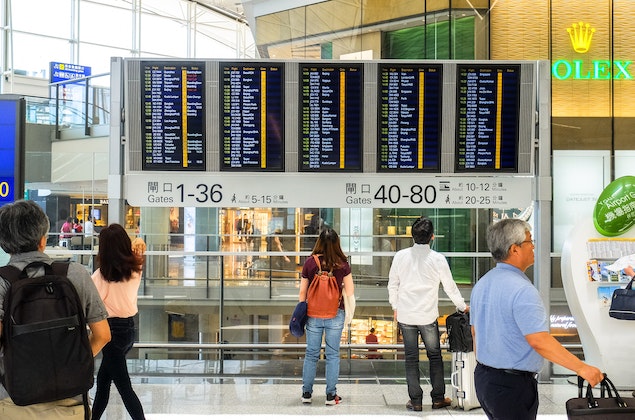Efficient navigation and clear communication are vital aspects of operating a functional airport. The strategic placement of signages, displays, and promotional stands can significantly contribute to the seamless movement of customers and enhance their overall experience.
On this article will explore various types of digital signages and displays for airport to provide easy navigation and helpful information.
Importance of clear signages and digital displays for airport
Airports are bustling environments with a constant flow of passengers, making it essential to have clear and effective signages and digital displays. These visual communication tools are vital in ensuring travelers’ smooth and seamless experience. Here are several reasons highlighting the importance of clear signages and digital displays in airports:
- Enhancing Navigation: Clear signages and digital displays help passengers navigate through the airport by providing directions, indicating key locations, and guiding them to their desired destinations.
- Real-Time Information: Digital displays are especially useful in airports, as they can showcase real-time flight updates, gate changes, departure/arrival schedules, baggage claim details, and security checkpoint wait times.
- Safety and Security: They can provide guidance on emergency exits, evacuation routes, and essential protocols during various situations. In the event of an emergency or evacuation, well-placed signages and displays ensure passengers can easily locate exits and follow evacuation procedures, enhancing overall safety.
- Promoting Airport Services: Utilizing digital displays and signages for promotional purposes helps generate awareness and encourages passengers to explore these offerings. Advertisements and promotional content can be strategically displayed on digital screens, providing valuable information.
- Multilingual Communication: Clear signages and digital displays that incorporate multilingual information ensure that vital messages are accessible to a broader audience. This inclusive approach improves communication effectiveness and reduces language barriers.
- Branding and Aesthetics: Airports are not just functional spaces; they also serve as significant touchpoints for an airport’s brand. This contributes to a positive perception of the airport, enhancing the overall passenger experience and establishing a strong brand identity.
Signage and furniture suggestions for easy navigation
Here’s a list of digital signages and displays for an easy-to-navigate airport.

Wall-mounted digital display
They can display a wide range of information, including flight details, gate numbers, departure and arrival times, baggage claim information, and even live updates on delays or cancellations. Wall-mounted digital displays also offer interactive maps of the airport, highlighting essential facilities such as restrooms, lounges, shops, and restaurants.
To optimize it, employ a user-friendly interface. Touchscreen capabilities enable passengers to navigate the system effortlessly, searching for specific flights, locating amenities, or accessing additional travel-related information. The interface may also support multiple languages, ensuring international travelers can easily understand the displayed content.
Digital signage display
The digital signage displays are large, high-resolution screens that showcase a wide range of multimedia content, including real-time flight updates, departure and arrival schedules, gate information, baggage claim details, and general airport announcements.
They should also be strategically positioned in key areas to assist customers in navigating the airport. They are usually near entrance points, check-in counters, security checkpoints, departure gates, baggage claim areas, and terminal walkways. By placing these displays in high-traffic areas, airports ensure maximum visibility and accessibility for passengers.
Interactive digital signage
The interactive digital signage system utilizes large high-definition touchscreens embedded with intuitive user interfaces. The interactive nature of these digital signs allows passengers to interact directly with the display, providing a customized and personalized experience.
To maximize the effectiveness of interactive digital signage, they should be positioned strategically in high-traffic areas where passengers naturally congregate. The displays should be sleek, modern and blend harmoniously with the airport’s aesthetic.
Touch screen kiosk
An innovative solution to assist travelers in quickly navigating through the bustling environment of an airport. The kiosk features a durable and responsive touch screen, enabling users to interact effortlessly with the various options available.
Upon interaction, the touch screen kiosk greets users with a straightforward and inviting main menu. The menu offers a variety of options, including flight information, gate locations, maps of the airport, nearby amenities, public transportation details, and general inquiries.
Users can effortlessly navigate these options by tapping on the relevant icons or inputting search queries using an on-screen keyboard.
Sign stand
The sign stand is an invaluable asset in any airport’s wayfinding strategy. Its prominent placement, clear signage, and interactive features provide passengers with a seamless, stress-free navigation experience.
It is equipped with adjustable height options, ensuring suitability for passengers of varying heights and individuals with different accessibility needs.
The sign stand employs a user-friendly approach, featuring color-coded sections and unambiguous directional arrows to guide passengers toward various facilities, gates, and services.
In addition to general wayfinding, the sign stand incorporates interactive touchscreens at select locations, enabling passengers to access real-time flight information, boarding gates, delays, and other essential updates.
Outdoor digital signage display
The display has a dynamic mapping system, enabling passengers to locate their desired terminals, gates, check-in counters, and amenities such as lounges, restaurants, and restrooms.
To enhance customer experience, the outdoor digital signage display incorporates advanced technologies such as touch screens, gesture recognition, and voice activation.
Best places for use:
- Entrance and exit areas
- Check-in and baggage drop areas
- Security screening zones
- Terminal gates
Wire display stand
Wire display stands are lightweight and versatile, making them ideal for displaying brochures, maps, and other promotional materials.
The wire display stand should prominently feature clear and concise signage indicating the purpose of each tier or compartment. Use large, bold fonts with contrasting colors to make the text easily readable from a distance.
In addition to placing the stand at various key points throughout the airport, having one near information centers or customer service desks can act as a supplementary resource. Passengers who need more personalized assistance can easily access the necessary information and brochures from these stands.
Conclusion
In conclusion, clear signages and digital displays are essential for airports to provide efficient navigation, real-time information, safety instructions, promotion of services, multilingual communication, and brand consistency. By investing in well-designed visual communication tools, airports can ensure smooth operations, reduce passenger stress, and create a positive and memorable experience for all travelers.
If you found this article helpful, make sure to check out this blog – Signage and Promotional Furniture Choices for Hotel. There will be extra information about effective signages and display furniture.

